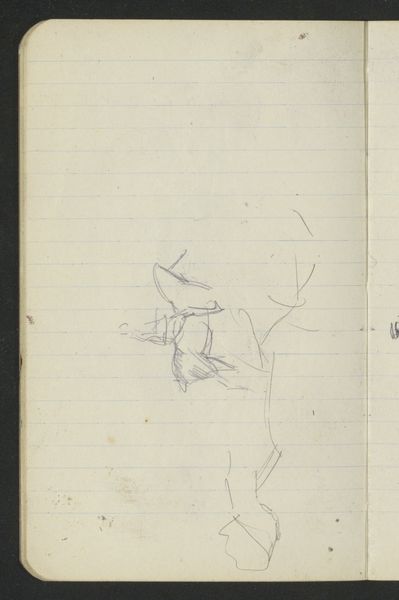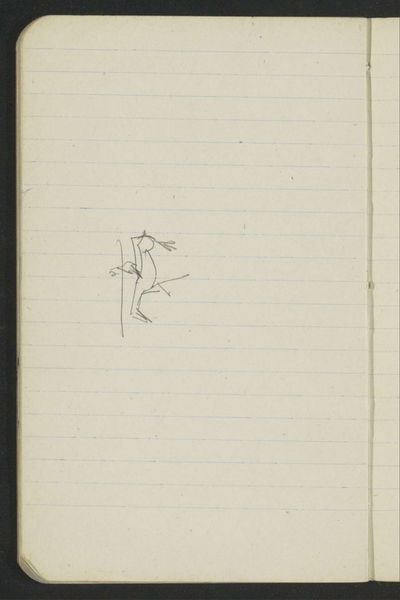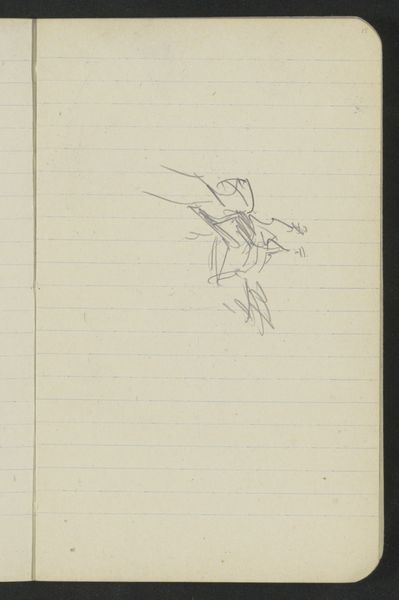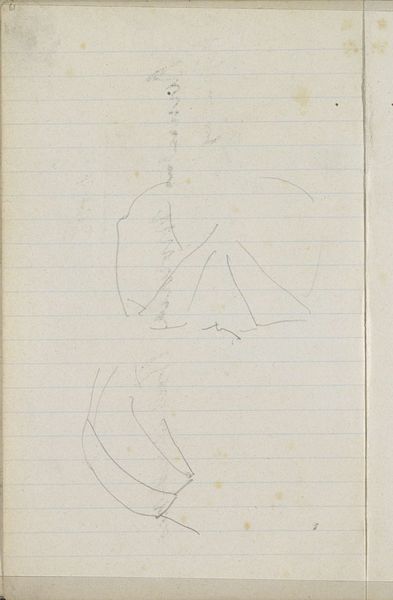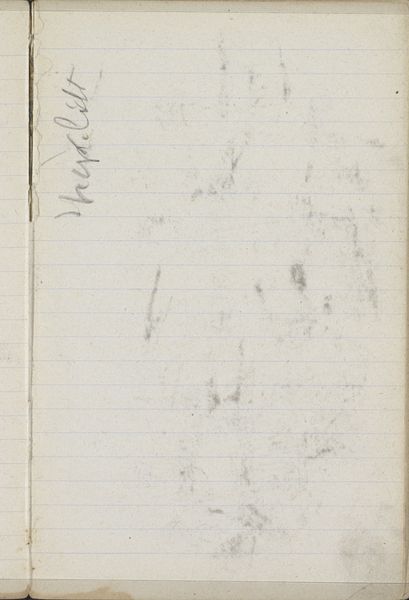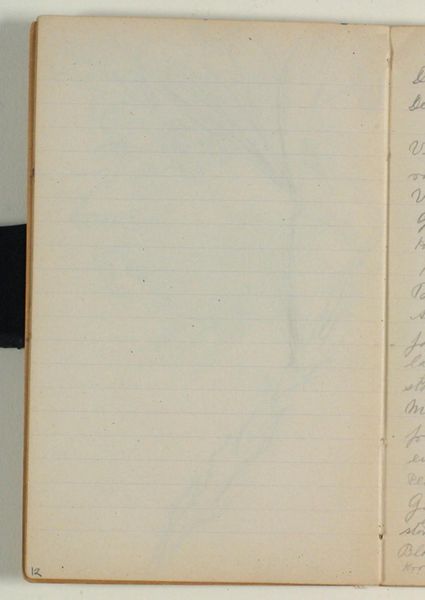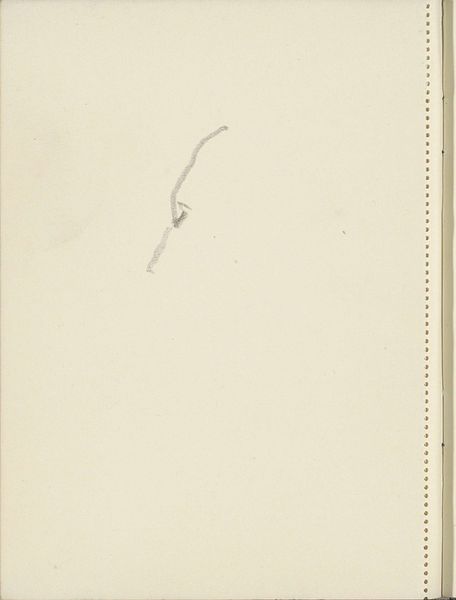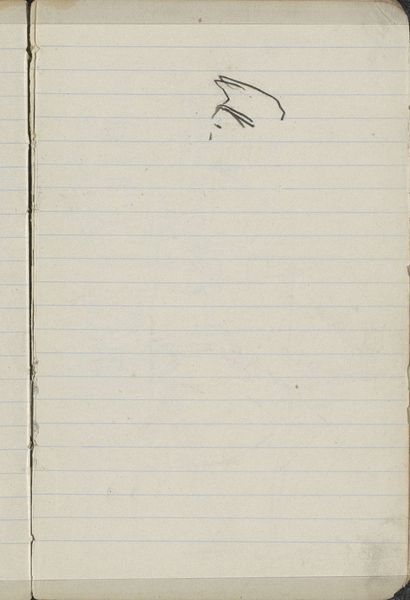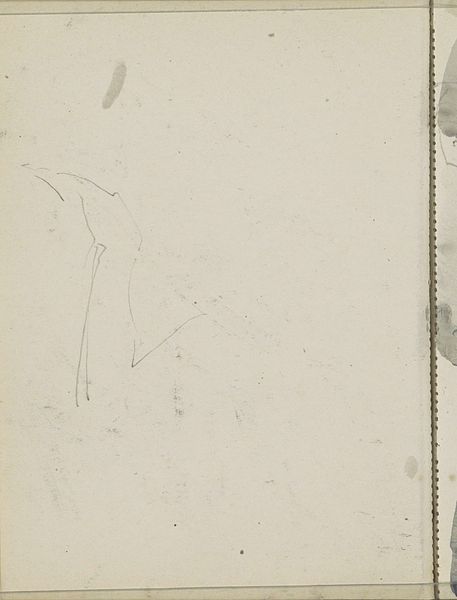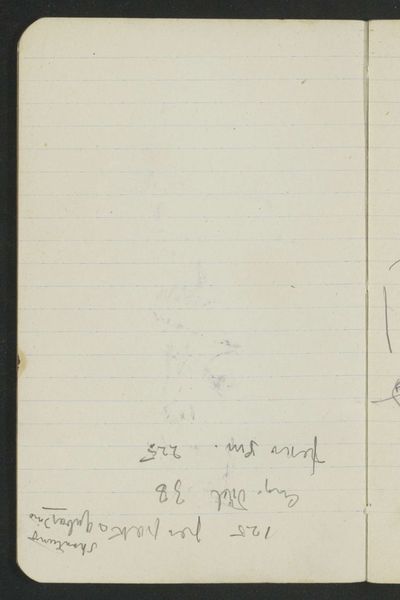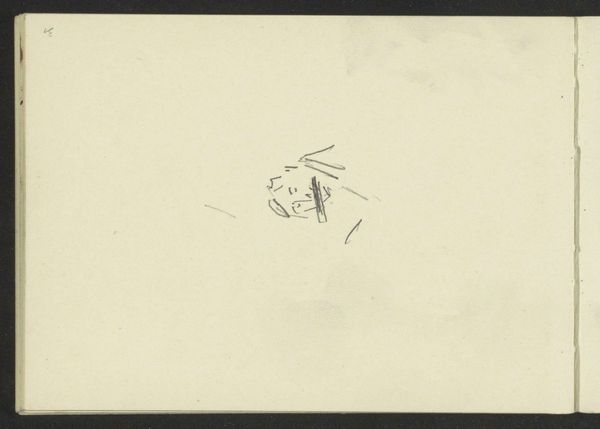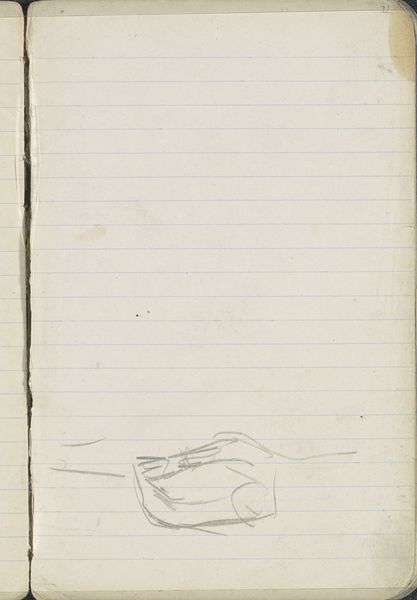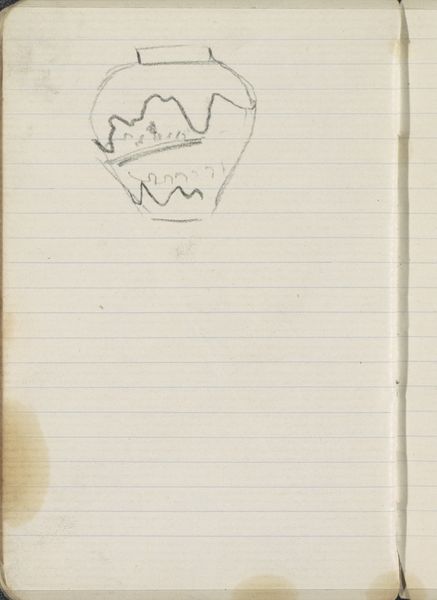
Copyright: Rijks Museum: Open Domain
Curator: Editor: So, here we have Isaac Israels' "Paard," created sometime between 1875 and 1934. It’s a pencil drawing on paper, currently held in the Rijksmuseum. What strikes me is how raw and immediate the sketch feels, like a fleeting observation captured in a notebook. What's your interpretation of this piece? Curator: Well, I'm particularly drawn to the *process* here. This wasn't intended as a finished artwork, but likely as a preparatory sketch or study. Think about the material conditions of its creation—cheap paper, readily available pencil. Its value lies in documenting the labor of observation and the artist’s immediate interaction with the subject. How might its inherent ‘unfinished’ quality affect its reception compared to, say, a finished oil painting of a horse from the same period? Editor: That’s interesting. I hadn't considered the significance of it being a sketch in a notebook. Does that challenge the traditional hierarchy of art versus craft, because it blurs that line between high art and something more functional or utilitarian? Curator: Exactly. And what about the availability and consumption of these materials? Pencil and paper are far more accessible than oil paints and canvas. It democratizes the artistic process, in a way. Anyone could theoretically do this. Are we more intrigued by this sketch knowing it’s by a recognized artist, or do the material and the way it was made also elevate it? Editor: I see your point. Knowing Israels made it certainly adds to its value in the traditional art world. However, focusing on the process—the rapid lines, the everyday materials—makes it accessible. I learned a lot by shifting my perspective, I usually seek the masterpiece when I visit a museum. Curator: Precisely, sometimes the most valuable insights come from appreciating the means of production. I’m glad we explored this ‘simple’ work today!
Comments
No comments
Be the first to comment and join the conversation on the ultimate creative platform.
